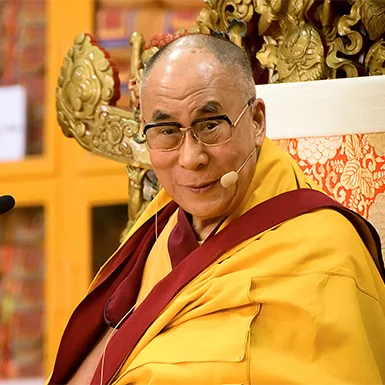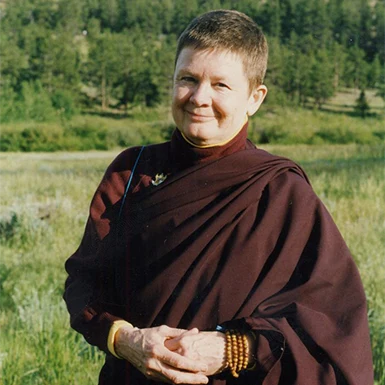Discover Thimphu’s Treasures
Thimphu, Bhutan’s vibrant capital, boasts a fascinating blend of tradition and modernity. Beyond Kuensel Phodrang, several iconic landmarks and cultural attractions await. Here are some highlights:
- Tashichho Dzong: The majestic Thimphu Dzong, also known as Tashichho Dzong, is the seat of Bhutan’s government and central monastic body. If your visit coincides with the schedule, you can explore its intricate architecture, witness the daily life of monks, and catch a glimpse of essential government ceremonies.
- National Memorial Chorten: This sizeable white chorten, adorned with golden spires, is a hub of spiritual activity. Locals circumambulate the stupa, spinning prayer wheels and offering prayers.
- Changangkha Lhakhang: One of Thimphu’s oldest temples, Changangkha Lhakhang, is revered for its protective deities and is a popular destination for parents seeking blessings for their newborn children.
- Folk Heritage Museum: Step back in time at the Folk Heritage Museum, where you can discover traditional Bhutanese lifestyles, crafts, and agricultural practices.
- Textile Museum: Marvel at the intricate weaving techniques and vibrant patterns of Bhutanese textiles at the Textile Museum, a showcase of the country’s artistic heritage.
- Motithang Takin Preserve: This wildlife preserve nestled amidst the hills is where you can encounter Bhutan’s unique national animal, the takin.
Suggested Itineraries
Here are two sample itineraries that combine Kuensel Phodrang with other local highlights:
Option 1: A Day of Spiritual and Cultural Exploration
- Morning: Start your day with a visit to Kuensel. Sit in the morning sun, illuminating the Buddha Dordenma statue. Enjoy the serene atmosphere and take in the panoramic views of Thimphu Valley.
- Afternoon: Head to Tashichho Dzong to explore the architectural wonder and witness the monks’ daily rituals (if accessible).
- Evening: Visit the National Memorial Chorten for a contemplative evening stroll. Observe the locals circumambulating the stupa and experience the spiritual energy of this revered landmark.
Option 2: Combining Spirituality with Nature and Tradition
- Morning: Visit Kuensel Phodrang and meditate or enjoy the peaceful ambiance.
- Midday: Head to the Folk Heritage Museum to glimpse Bhutanese traditions and daily life.
- Afternoon: Walk on the wild side at the Motithang Takin Preserve.
- Evening: Conclude your day with a visit to Changangkha Lhakhang. Witness the traditional architecture and experience the spiritual atmosphere.
Remember, this is just a suggestion. It can tailor your itinerary accordingly based on your interests and length of stay.
Personal Encounters with Bhutan’s Spiritual Heart
Often, the impact of visiting Kuensel Phodrang goes beyond mere sightseeing. It’s a place that stirs the soul and leaves a lasting impression on travelers from all walks of life.
Sarah, a Buddhist pilgrim from Canada: “The moment I saw the Buddha Dordenma, I felt an overwhelming sense of peace wash over me. The statue’s sheer size and serene expression filled me with awe and reverence. It was as if the Buddha was watching over the valley, blessing all who came here. I spent hours meditating at Buddha Point, and the experience deepened my spiritual practice immensely.”
Tashi, a Bhutanese local: “It is a source of pride for us. It’s a reminder of our rich Buddhist heritage and the importance of compassion and wisdom in our lives. I often come here with my family to offer prayers and enjoy the tranquil atmosphere. The Buddha Dordenma statue is truly a blessing for our country.”
Carlos, a photographer from Spain, says, “As a photographer, I’ve traveled to many beautiful places, but this one stands out. The statue’s golden glow against the Himalayas backdrop is breathtaking. But it’s more than just a pretty picture. The place has a special energy you can feel when you arrive. It’s a place that inspires reflection and reminds you of what truly matters in life.”
Pema, a student from Thimphu: “I love coming to Kuensel Phodrang to study or to just relax with friends. It offers a tranquil retreat from the city’s hustle and bustle. The views here are incredible, and the statue always fills me with hope and optimism.”
Capturing the Majesty in Photographs
It is a photographer’s paradise with its majestic Buddha Dordenma statue and breathtaking panoramic views. Here are some tips and recommendations to help you capture the essence of this sacred site.
Tips for Capturing the Perfect Shot
- Wide-Angle Lens: Use a wide-angle lens to fully capture the Buddha Dordenma statue’s grandeur and the Thimphu Valley’s sweeping views. It will help you frame the entire statue and its surroundings in a single shot.
- Sunrise and Sunset: A unique light comes up when the sun rises and sets. The light comes up from a warm object with beauty that creates a beautiful statue in front of a person and other beautiful impressions around it.
- Details and Close-Ups: Don’t just focus on the big picture. Capture the intricate details of the statue, such as the folds of the robes, the serene expression on the Buddha’s face, and the colorful prayer flags fluttering in the wind.
- People and Culture: Include people in your shots to add a sense of scale and cultural context. Capture the local Bhutanese people offering prayers, spinning prayer wheels, or enjoying the peaceful atmosphere.
- The Surrounding Landscape: Don’t hesitate to explore the Kuensel Phodrang Nature Park for additional photo opportunities. Capture the lush greenery, the vibrant flowers, and the panoramic views of the Himalayas.
Recommended Viewpoints
- The base of the Statue: Stand at the base of the Buddha Dordenma and look up to capture its towering presence. This perspective emphasizes the statue’s sheer size and intricate details.
- Viewing Platform: Head to the viewing platform located behind the statue. From here, you’ll get a panoramic view of the Thimphu Valley with the Buddha Dordenma in the foreground.
- Surrounding Trails: Hike or walk along the Kuensel Phodrang Nature Park trails. These paths offer various vantage points to capture unique perspectives of the statue and the surrounding landscape.
Best Times for Photography
- Early Morning: The morning light is soft and diffused, ideal for capturing the statue’s details without harsh shadows.
- Late Afternoon: The golden hour before sunset casts a warm glow on the statue and the surrounding scenery, creating a magical atmosphere.
- Clear Days: Choose a day with clear skies to ensure the best visibility of the Himalayas and the statue.
Additional Tips
- Respect the Sacredness: Remember that it is a sacred site. Be respectful of those praying or meditating, and avoid disruptive behavior.
- Dress Modestly: Dress appropriately, covering your shoulders and knees, as a sign of respect.
- Be Patient: Take time and wait for the right light and composition. The results will be worth it.
A Bhutanese Treasure Awaits
It is more than a monument. It is a testament to Bhutan’s rich spiritual heritage and architectural prowess, a tranquil haven for contemplation and reflection. The towering Buddha Dordenma statue, with its golden glow and serene demeanor, symbolizes compassion, wisdom, and protection for all who visit.
From its captivating history to the vibrant cultural tapestry it weaves, it offers a truly enriching experience. The site’s accessibility and breathtaking panoramic views of the Thimphu Valley make it an essential destination for travelers seeking spiritual enrichment and natural beauty.
Whether you’re a devout Buddhist, a passionate photographer, or a curious traveler, this extraordinary Bhutanese landmark welcomes you with open arms. Discover the serenity, uncover the symbolism, and create memories at this place.
So, why wait? Plan your visit to Kuensel Phodrang and let the Buddha Dordenma’s tranquil presence guide you on a self-discovery and cultural exploration trip. Experience the magic of Bhutan’s spiritual heart for yourself.










